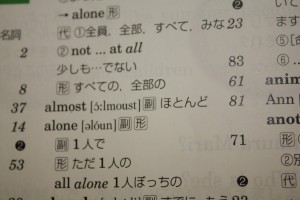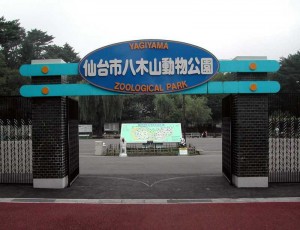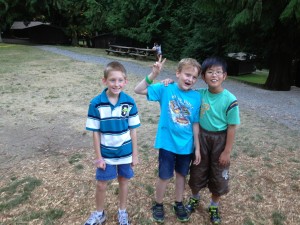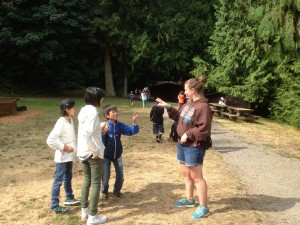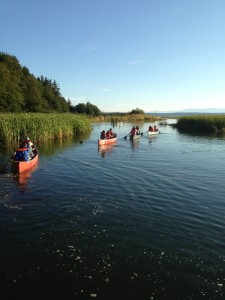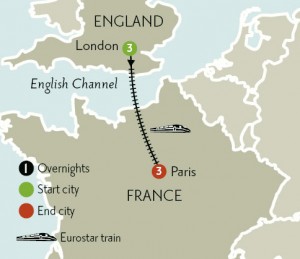curriculum eikaiwa expectations language courses school management university
by sendaiben
2 comments
Kaizen, the art of gradual improvement
An essential part of program development
I mentioned kaizen (continuous improvement) at the end of my talk on ER program design.
Kaizen is making things better, continuously. Basically finding and solving problems over and over again. Over time, this results in huge improvements and the evolution of programs.
I’ve been very fortunate to be able to work with my colleague Dan E at Tohoku University, who is a master of kaizen. Thanks to this, our extensive reading program is several orders of magnitude better than it was when we started collaborating.
At Cambridge English as well, thinking back to when we started over ten years ago the school and the classes are unrecognizable. Almost everything we do, we do better now.
But kaizen does not happen automatically. It requires teachers to have the desire and the ability to make changes. It also requires a culture of development, where problems lead to solutions that are implemented across the board. Communication is essential and talking about problems with colleagues leads to better solutions.
Some examples of kaizen at Tohoku University:
- improving worksheets so that students understand them better
- developing bilingual explanations
- sharing effective class activities
- developing protocols to deal with cheating
- having students write book reports in class instead of for homework
Examples of kaizen at Cambridge English:
- developing electronic and paper record keeping
- writing student names in romaji on everything (books, notebooks, attendance cards)
- developing lesson plans
- choosing materials
- organizing the classroom
As you can see, nothing groundbreaking. The main point is that improvements are continuous, problems are dealt with as they come up, solutions are reached through communicating with colleagues and are implemented by everyone.
Kaizen is barely noticeable in the short term, but over a longer period the improvements are staggering.
Do you have any positive or negative experiences with kaizen?
eikaiwa expectations high school JHS junior high school kids Language learning teaching vocabulary
by sendaiben
14 comments
My ‘almost’ mini-lesson
Unfortunately, many students in Japan are taught that ‘almost’ in English is ‘hotondo’ in Japanese
Sadly this is not true, so over the years I have developed a short mini-lesson to correct this false impression and help students better understand the meaning of almost.
The lesson can start at any time, but it requires a trigger: one of the students must translate almost as hotondo.
Once that happens, I quickly go through the following steps:
- I point out that even though many teachers and textbooks teach this, almost is not the same as hotondo
- I pretend to trip, and then say “phew, I almost fell over just now”
- I ask the students to translate the previous sentence: “hotondo korobimashita” sounds really strange, so clearly hotondo is not a good translation here
- I tell the students I planned to go to Tokyo this morning, but ended up not going. “I almost went to Tokyo”
- “Hotondo Tokyo ni ikimashita” also sounds weird
- I offer two alternative translations for almost: mou chotto de ~ and ~wo suru tokoro datta
- I explain that hotondo is actually almost all in English: mou chotto de zenbu
Of course, this illustrates vividly the perils of learning and teaching vocabulary out of context, which provides another excellent mini-lesson for the students 🙂
Do you have any favourite mini-lessons?
business eikaiwa kids school management study trips summer camp young learners
by sendaiben
leave a comment
Eikaiwa School Field Trips: Summer at the Zoo
Every year we organize some kind of optional summer event for our students. Past events have included ice skating (feels weird to put on sweaters and gloves in August!), outdoor games, playing in a river, and trips to the seaside. This year we decided to go to Yagiyama Zoo in Sendai with our preschool- and elementary school-aged students.
Before the trip we visited the zoo to plan out routes and activities, bought small sketchbooks for all the students, divided them into groups and assigned teachers to lead each group.
There was a slight problem with the timing of the announcement coinciding with the school being closed for some classes, so that some parents only got the announcement letter after the trip was full! We did our best to accommodate them which led to us needing a larger bus and the groups getting a bit too big for the number of teachers we had (several were away due to the summer holidays).
Then the day before the excursion the weather reports changed from sunny with cloudy spells to rain (60%). Then that evening rain (70%). The next morning the ground was wet when we woke up at six am, but by seven it was raining. By eight thirty (the deadline for making a decision) it was raining heavily.
Fortunately we had a plan B. We had made arrangements to go to the aquarium at Matsushima in the event of rain. This was not ideal, but preferable to cancelling and being out of pocket for the bus hire and other expenses.
The problem with the aquarium is that we hadn’t had time to visit and make plans. It was also much more expensive than the zoo, and smaller. We weren’t sure if there was enough to do there for the four hours we had planned.
Lessons Learned
We learned a lot from this year’s trip. Here are some of the most important things:
1. Having a plan B is essential if weather could impact on your trip. What were the chances of the only rainy day for weeks and weeks being the day we were going to the zoo? Because we had a plan B and had told the students and parents about it our trip wasn’t ruined. However, we should have put more time into getting ready for plan B.
2. Accurately estimating demand, making sure the sign-up process is fair to everyone, and sticking to deadlines and limits on numbers of students is important. We didn’t have any major problems this time, but the large numbers of students made things more difficult for our teachers (I found myself supervising sixteen young children for much of the day, and it was too many for comfort).
3. The number of seats quoted by bus companies include those fold-down seats in the middle. I don’t like them because they are uncomfortable, seem less safe, and mean that it is not possible for teachers to move around the bus when they are in use. In the future, I would like to make sure all the students have a proper seat, with only teachers in the middle seats if necessary.
Conclusion
In the end the trip turned out well. The aquarium had just enough to keep us busy (looking at the fish, drawing pictures, watching the sealion show, shaking hands with a sealion, meeting baby turtles, wading in a big pool, etc.). It was also great that they had a large seating area that wasn’t at all busy, so we could sit the students down in groups and talk to them, have them draw pictures, and eat lunch in an orderly fashion.
I think we were both unlucky (the weather) and lucky (everything turned out fine and the students enjoyed themselves). We also got a few insights for next year.
Does anyone else do field trips?
business curriculum eikaiwa ES expectations JHS junior high school kids language courses Language learning overseas study trips school management summer camp young learners
by sendaiben
2 comments
Taking students to summer camp in the US
This is a guest post (the first on this blog!) by a friend of mine, Ryan Hagglund. He has an extremely promising variation on the usual study abroad trip that I thought you would find interesting. Enjoy and let us know what you think in the comments.
After many years of thinking about it, we finally took students from our school (MY English School in Yamagata) to the US for the first time this summer. Thanks to all the advice and stories I read and heard from others, the trip was overall a success and will hopefully serve as a building block for many more to come.
My impression is that most international trips English schools organize involve some form of formal study. While there is obviously nothing wrong with studying—we ARE a language school—it seems like there’s plenty of time for the students to study while in Japan. The main purpose for us in going was to give the students something they couldn’t receive here: the opportunity to interact with large numbers of English-speaking children of their own age. We wanted to give them an experience that would lead to greater motivation and increased interaction skills, among other things. The instrument we chose to accomplish this was to have the children attend a summer camp intended for children who are native speakers of English, not English learners.
We chose Warm Beach Camp in Stanwood, Washington. We chose Warm Beach for several reasons. First, it is the camp I attended when an elementary and JHS student, so I was familiar with the facilities. Having attended almost 30 years ago, however, I no longer had connections to any of the staff. Second, it is a large facility that not only has many activities for campers to do, but was also able to house our staff away from our students but still onsite. Third, it gave considerable value for the price. Camp was only US $399 per student for six days and five nights—including meals—and they supplied free room and board for our staff in a separate onsite facility. They also provided free sleeping bags and pillows to our students. (Warm Beach is a Christian camp facility, but we were careful to make sure our students and their parents were aware of this. There are most likely secular camps with similar facilities and value.)
We took five students—two boys and three girls—ages 9-13 (Japanese elementary 4th grade to JHS 2nd year). There were approximately 80 campers all together ages 9-11 (US 4th to 6th grade) divided into cabins of six or seven students each. Our 13-year-old student had no problems relating to the younger campers, though JHS 1st year would probably be a good cutoff. Since none of the US campers nor counselors spoke Japanese, the students had to navigate in English. What was nice, however, were the many activities the children were able to participate in, allowing them to interact in English without consciously having to overly focus on the language itself. Some of the activities they participated in were: field games, swimming, archery, horseback riding, canoeing, wall climbing, BB-gun shooting, mini-golf, and a bonfire. While it was challenging for them at first, by the end of the trip four of the five students said they would like to stay longer. The fifth (12 years old) said she was glad to have come, but just ready to go home. We were only with the students for a daily meeting each evening, when pre-activity safety instructions in Japanese were necessary, and when a student became homesick and needed a little extra support. We had a pre-paid US cell phone so the camp and/or counselors could reach us at any time if necessary. They only called us once.
While the camp was our focus, we did do other activities as well. Our schedule was as follows:
Saturday Aug 3 – Arrive in Seattle and tour the city
Sunday Aug 4 – Visit Wild Waves Theme Park
Monday Aug 5 – Saturday Aug 10 – Attend camp and Seattle Mariners baseball game (Aug 10)
Sunday Aug 11 – Return to Japan
We will probably add an additional day of Seattle sightseeing if we go again next year.
Camp positives:
1) No need to be concerned about the quality of homestay families.
2) No need to worry about logistics for most of the trip. While at the camp, we were able to focus entirely on the students’ linguistic and emotional needs, while enjoying ourselves for most of the time. The camp took care of the rest.
3) No need to think of specific language activities, as the situation itself required meaningful English interaction from our students.
4) The camp wanted the trip to be successful as much as we did.
5) No need to pay a third party for special arrangements.
6) Students needed very little spending money. Each student brought 20,000 yen in spending money, but none of them came close to using it all.
7) Since almost everything was included in the camp price, there were fewer opportunities for financial surprises.
8) 24-hour onsite certified nurse, removing the need for us to worry about student sickness and/or injury.
Camp possible negatives:
1) We did have to plan the logistics outside of camp time. This included airline booking, three nights of hotel, sightseeing in Seattle, and transportation to and from the camp. While not difficult, might be hard to leave to a school teacher or staff member not familiar with the Seattle area.
2) Not as appropriate for students who would prefer a “travel experience” versus an “immersion experience”.
All in all, it was a very successful trip—especially for a first time. We are already working to produce marketing materials for a similar trip next year.
Ryan Hagglund is President and CEO of MY English School in Yamagata Prefecture. He has lived in Japan for 15 years and originally hails from the Pacific Northwest. He is married to Maki Hagglund and has three children: Aiden (8), Ian (6), and Sean (4).
business eikaiwa expectations high school junior high school school management study trips young learners
by sendaiben
17 comments
Taking Students to Europe (2013)
After the (semi-)successful study trip to Australia’s Gold Coast in 2012, we decided we wanted to do something similar this year.
In Australia, the best things we did were as a group, and the worst part of the trip were the host families, so this time we tried to put together a kind of eye-opening cultural tour, with a week in London and three days in Paris.
The students were interested but their parents weren’t. “Sounds like you’re just going on a trip”, they said, and weren’t open to the argument that it was the kind of trip that most kids in Japan never have the chance to make.
We quickly rethought our plans and changed the trip to incorporate a week’s homestay/English classes in London with three days in Paris. Seven students signed up, fewer than the ten we had set as a minimum. I wanted to cancel, but the school manager decided to press ahead as a learning experience.
We went with a company in the UK recommended by a friend of mine. Big mistake.
The problems
1. The school we partnered with for this trip was disorganized and unprofessional. The frequently forgot things, failed to deliver on previously agreed conditions, and three days before the trip emailed me saying “we couldn’t find the last homestay family for you, so let’s just refund your money and call it quits”. Our office manager physically collapsed when I relayed that message. I was able to broker a solution eventually, but it was incredibly stressful. After we arrived, instead of providing staff to guide us on field trips as agreed, they dropped us off at various places leaving the teacher accompanying the students to try to salvage things and provide tours and activities on the spot. Classrooms were booked at the wrong time, activities were booked on the wrong day. Scheduled activities had to be changed because they were not available on Sundays, and so on. Instead of providing classes for each level of student (we had three different levels of ability) they just provided two. None of this was said in advance, it just happened and we decided to just get through the experience without upsetting the students rather than argue.
2. Organizing everything ourselves meant dealing with airlines, hotels, transport companies, schools, museums, restaurants, etc. Once we were in country, the sole teacher on the trip had an excessive amount of responsibilities and stress. For example, on the last day we had a guided tour of Versailles including pickup from the hotel and drop off at the airport, but until the minibus actually turned up we couldn’t be sure it would happen so had to have a plan B in place. Everything turned out okay in the end (I don’t think the students noticed the problems) but it was a bit too intense.
3. Due to a last-minute venue change (from London to Cornwall!) we ended up needing to take two long (6-hour) journeys by minibus. This was a bit of a waste of time. I found out later that we could have toured London first, then made our way to Cornwall, then flown from there to Paris, which would have been a lot better.
4. There were a large number of unanticipated supplementary expenses, from meals to transport to laundry, and as the organizers we felt responsible for these.
The benefits
1. We actually had nice homestay families this time (which is 90% of the battle). Also, Cornwall is a great place and the students enjoyed getting to know it.
2. Touring London for one day and Paris for three was fantastic. The students were blown away by the buildings, the museums, and the ice cream 🙂
3. Despite the unanticipated expenses above, and not having enough students, the trip was slightly profitable.
Things we learned
1. Partnering with good people/organizations is essential. Trying to pick up the pieces after someone else drops things is exhausting and stressful, as is making contingency plans on the fly. We will be much more careful in the future.
2. It’s vital to balance activities and downtime for the students. Making sure they have some time to relax and time to themselves each day is really important. I feel we managed this well on this trip.
3. It’s preferable to take two teachers. We were able to have a former teacher join the group in London and Paris, and it made a huge difference. Having two teachers spreads the worry, allows each teacher to have a little time off, and provides a backup in case of accidents. It’s also great to have one teacher wait with the group while the other buys tickets, etc.
Overall
This was a good trip overall. Students that went on both (the former Australia trip and this one) said this time was more fun and interesting. We did a lot, and I have almost 1000 photos to prove it.
However, it was far too stressful and could have gone wrong. For future trips we will need to do more preparation and research.
We’re thinking of going to Canada or Singapore next year. Anyone know any good schools? 😉

